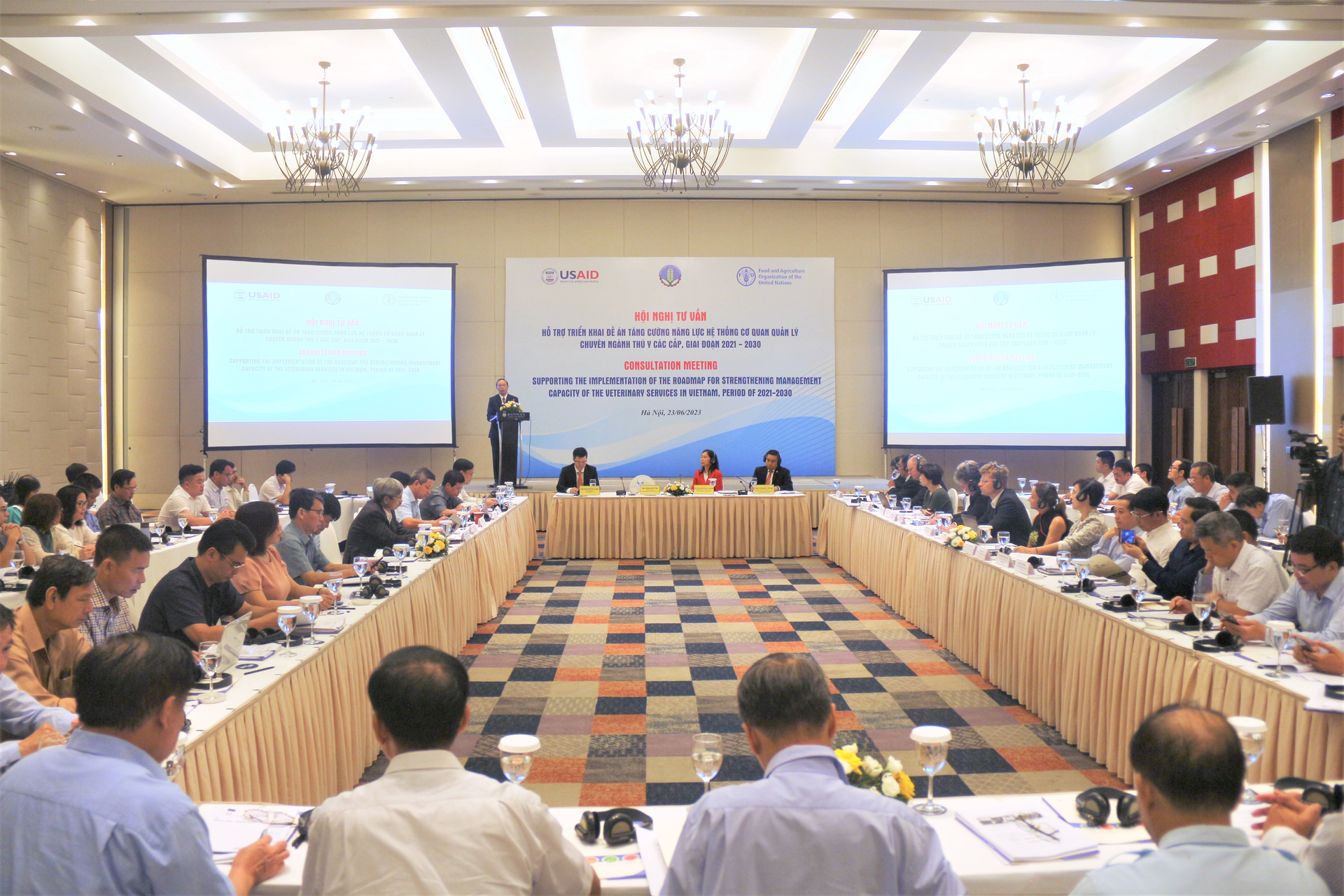
Advisory conference to support the implementation of the project to strengthen the capacity of the veterinary management system at all levels for the period 2021 – 2030. Photo: Pham Hieu.
On June 23, Vietnam’s Ministry of Agriculture and Rural Development, together with the Food and Agriculture Organization of the United Nations (FAO), organized a consultation conference to support the implementation of the management agency system capacity-building project. specialized in veterinary medicine at all levels in the period 2021 – 2030.
The ultimate goal of the strategy is to strengthen the capacity of the veterinary management system at all levels, ensure effective and efficient implementation of veterinary activities, adequately control animal diseases, ensure public health protection, and ensure proactive and comprehensive global integration.
Vietnam’s agricultural sector has been very productive in recent years. In 2022, export value surpassed US$52 billion and contributed to GDP growth of more than 6.5%. Livestock farming contributes more than a quarter or 25.2% of Vietnam’s agricultural GDP.
However, as one of the fastest growing economies, Vietnam faces many threats that affect livestock production, including animal disease threats. Animal health is a key factor for animal production and sustainable development. But rapid changes in animal production increase the likelihood that new pathogens will emerge, evolve, and be transmitted from animals to humans.

Deputy Minister of Agriculture and Rural Development Phung Duc Tien spoke at the conference. Picture: Pham Hieu.
Through experience and research, healthy animals are closely linked to healthy people and a healthy environment. One thing is certain: animal diseases can have significant impacts on animal husbandry, trade, livelihoods, food security and the economy, as well as human health. In addition, animal diseases can severely affect vulnerable or threatened wildlife populations and hamper efforts to protect biodiversity.
Therefore, it is important to strengthen Vietnam’s veterinary system to minimize the impact of zoonoses and zoonoses that threaten our livelihoods and food security. A strong veterinary system is essential to ensure that “no one is left behind” as the country strives for high-income status.
Through its One Health approach, FAO has contributed to improving animal health to make livestock farming more efficient and sustainable, while achieving optimal health for all in relation to people, animals, objects and the environment.
With support from USAID and other donors, FAO Vietnam’s Center for Emergency Control and Prevention of Transboundary Animal Diseases (ECTAD) has been working with MARD since 2006 to control and prevent the spread of transboundary animal diseases (TADs) and zoonoses (zoonoses). such as highly pathogenic avian influenza (HPAI) to reduce the risk of transmission to humans.

International delegates at the conference. Picture: Pham Hieu.
The national strategy and plan for the development of a veterinary service system demonstrates the Vietnamese government’s strong commitment to protecting people’s welfare and food security. In addition, it promotes the sustainable development of livestock through effective animal disease control, public health protection and the integration of livestock into world trade.
The project has four main components to strengthen the capacity of Vietnam’s veterinary management system: (1) Strengthening the management and control capacity of animal epizootic and diseases transmitted between animals, animals and humans, (2) Strengthening the management capacity of veterinary hygiene and food safety for animals and livestock Products, (3) Strengthening capacities in management, research, production, testing and testing of veterinary drugs and vaccines, (4) Application of information technology and digital transformation in veterinary field.

